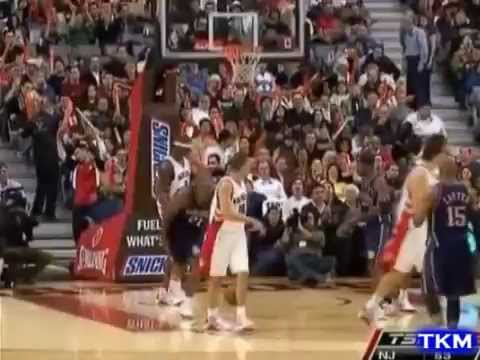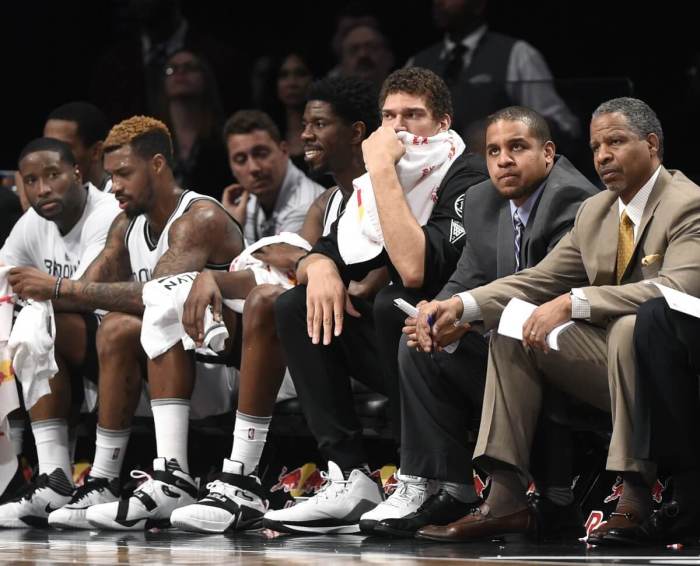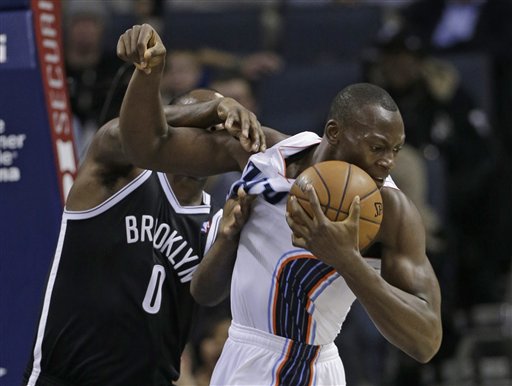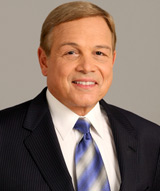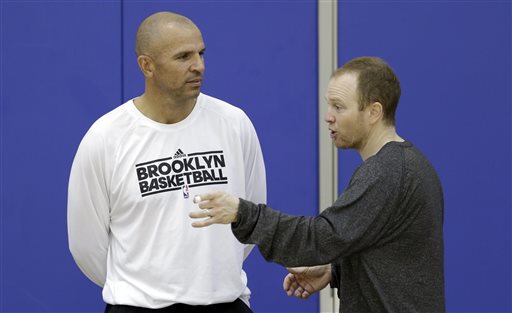
Name: Bobby Simmons
Position: SF
Height: 6’7″
Weight: 210
Birth Date: June 2, 1980 (age 29)
Birth Place: Chicago, IL
Number: 21
College: DePaul University
Drafted: 2000, 2nd round, 41st overall by Seattle
Experience: 8 seasons
Contract: $11.2 million in 2009-10
On offense:
The Nets most expensive player was also their deadliest from three-point range last season. Simmons shot 45 percent from beyond the arc last year, good for 5th overall in the league. And Simmons is not afraid to shoot either. More than half of his field goals attempted (441) were threes (262) and 84 percent of all of his shots were jumpers according to 82games. That’s on par with his career numbers where 82 percent and 78 percent of his shots were jumpers his past two seasons. Simmons doesn’t do a whole lot to create his own shots either. By lining up in the corner, where Simmons launched 152 of his total threes (good for a 46 percent accuracy), Simmons generally got most of his shots off via the assist. About 87 percent of all of his jumpers were assisted to last season.
So as a good three-point shooter whose bulk of his shots were treys, Simmons also had a great True Shooting (TS) percentage. His 60 percent TS was good for 2nd among small forwards with at least 500 minutes of playing time last year, according to ESPN’s John Hollinger. His TS was ranked 27th league-wide.
Here’s a look at his shooting tendencies from last season:

Still, let’s not make Simmons out into some kind of underutilized offensive juggernaut because outside of shooting three-pointers, there’s not a whole lot he does exceptionally well. His overall Player Efficiency Rating (PER) of 12.06 was good for 40th out of the 60 qualifying small forwards. Though he shot decently from the free throw line (74 percent), he doesn’t get there often enough to make an impact. His 58 FT attempts last season ranked him 45th in that that category compared to the top 50 small forwards. Simmons, overall, is not a key cog in the offense compared to his positional counterparts. His usage rate, which is the number of possessions a player uses per 40 minutes, of 13.2 ranked him 51st of 60 small forwards who logged more than 500 minutes last year.
Lastly, according to Hollinger, Simmons’ value added (VA) – the estimated number of points a player adds to a team’s season total above what a “replacement player,” such as the 12th man on the roster, would produce – was 40 last year, ranking him 208th out of 328 players in the NBA. While certainly better than those players who were in negative territory last year, remember Simmons did start a bulk of games last year and this VA number is relative to what the last player of the bench could provide for the team.
On defense:
Both Hollinger and Draft Express said Simmons has developed a reputation as a solid defender, but after missing the entire 2006-07 season with a foot injury, he appears to have lost a step or two on that end. In fact, Draft Express implies that Simmons gets a little lackadaisical on the defensive end: “Will make an effort to read passers and create turnovers, but would rather stay solid than take an unnecessary risk. Cleans the glass occasionally, but likes to get up the floor when he feels his teammates have thing covered.”
Statistically, Simmons doesn’t seem to stand out in any way from his peers defensively. His rebound rate, the percentage of missed shots a player rebounds, of 9.5 ranks him 22nd out of the 60 small forwards with 500 or more minutes. His steals per game average of .7 was good enough to rank him 99th out of 178 players who either played in 70 games or had more than 125 steals last season. Simmons barely registers any blocks, averaging .1 per game.
When looking at how the opposition fares when Simmons is on the floor, he comes across as a below average defender. Despite being known as a decent perimeter defender, opposing small forwards had an effective field goal (eFG) percentage of 49 percent last year. Opponent’s PER at the small forward position was 16.2 against Simmons, good for a -3 differential. Coach Lawrence Frank would occasionally give Simmons minutes at power forward, and he fared worse there. Power forwards had an 18.1 PER, compared with Simmons’ 14.3 PER, good for a -3.8 differential.
Miscellaneous:
Bobby Simmons might as well have the words “expiring contract of” attached to the front of his name. While he has established value as corner jump shooter, all of the buzz surrounding Simmons this season will likely revolve around the one-year, $11.2 million price remaining on his contract. If the Nets are in playoff contention, and appear to have their move to Brooklyn financed by the All-Star Break this year, expect to hear Simmons as a potential trade chip.
Comments:
Simmons could be a solid role player on the Nets, but for financial reasons, and some stubbornness by Lawrence Frank, he was part of the starting rotation for about half the season and received playing time over the likes of guys like Chris Douglas-Roberts and Ryan Anderson. With the Nets acknowledging their desires to build up some of their younger players like CDR and rookie Terrence Williams, this season, I would expect Simmons to receive less playing time and to be used almost exclusively as a three-point shooter off the bench. He also seemed to be replaced on the depth chart by Jarvis Hayes, who was a pleasant surprise offensively off the bench last year.
More on Bobby Simmons:
NetsAreScorching

